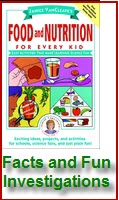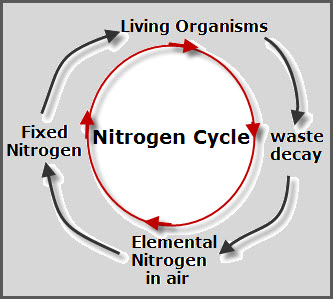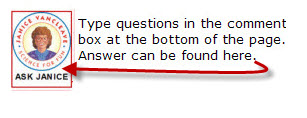 Earth’s only inexhaustible energy source comes from the Sun. The supply of chemicals on Earth are fixed, unless you count meteorites from space. The food you eat is made of chemicals–where did they come from? If you trace the source of each chemical in your body, you would end up going in circles. This is because living organisms only borrow their atoms. You borrow atoms from the food that you eat and the air that you breathe. You give back atoms to the air when you exhale. Waste from your body is made up of atoms, which eventually returns to the soil. Plants borrow atoms from the soil and air, and then you eat the plants–and the cycle goes on.
Earth’s only inexhaustible energy source comes from the Sun. The supply of chemicals on Earth are fixed, unless you count meteorites from space. The food you eat is made of chemicals–where did they come from? If you trace the source of each chemical in your body, you would end up going in circles. This is because living organisms only borrow their atoms. You borrow atoms from the food that you eat and the air that you breathe. You give back atoms to the air when you exhale. Waste from your body is made up of atoms, which eventually returns to the soil. Plants borrow atoms from the soil and air, and then you eat the plants–and the cycle goes on.

Every type of atom in your body is part of a chemical cycle. For example, the Nitrogen Cycle shown in the diagram. Fixed nitrogen mean that nitrogen is combined with hydrogen or oxygen.
Nitrogen gas makes up about 78% of air. This gas is not very reactive. It is not a fuel, nor does it help things to burn. In air nitrogen is diatomic, this mean that two atoms of nitrogen are linked together. The reason why nitrogen is so inactive is that it takes so much energy to pull these linked atoms apart. Two natural ways that this happens is:
- lightning
- bacteria
Once the nitrogen has been “fixed” plants and animals can use it. Notice that the waste from living organisms as well as their dead bodies eventually change back to elemental nitrogen in the air. I think this last step should be called “unfixing,” but someone named it denitrification–I like “unfixing” better.
For more information about the Nitrogen Cycle, see
